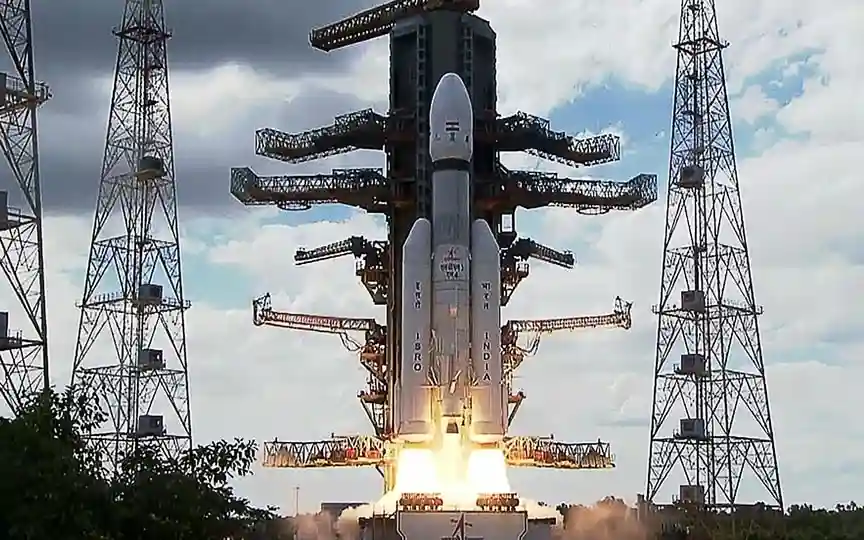Exploring the Moon’s South Pole: Why Space Agencies are Competing
India’s space agency, ISRO, is embarking on a mission to land a spacecraft on the moon’s southern pole. This endeavor has the potential to propel India’s space aspirations forward and enhance our understanding of lunar water ice, which is considered to be among the moon’s most precious resources.
Here’s what’s known about the presence of frozen water on the Moon — and why space agencies and private companies see it as the key to lunar colonization, lunar mining, and a possible Mars.
HOW DID SCIENTISTS FIND WATER ON THE MOON?
Already in the 1960s, before the first Apollo landing, scientists speculated that there could be water on the Moon. The samples returned for analysis by the Apollo crew in the late 1960s and early 1970s appeared to be dry.
In 2008, researchers at Brown University returned to these lunar samples with a new technique and found hydrogen in tiny volcanic glass beads. In 2009, a NASA instrument on the Indian Space Research Organization’s Chandrayaan-1 probe detected water on the moon’s surface.
In the same year, another NASA probe that hit the South Pole discovered water ice beneath the surface of the moon. An earlier NASA mission, the 1998 Lunar Prospector, had found evidence that the highest concentration of water ice was in craters in the shadow of the South Pole.
WHY IS WATER IMPORTANT ON THE MOON?
Scientists are interested in pockets of ancient water ice because they could provide information about lunar volcanoes, the material delivered to Earth by comets and asteroids, and the origin of the oceans.
If there is enough water ice, it can be a source of potable water for lunar exploration and help cool equipment.
It could also be broken down to produce hydrogen for fuel and oxygen to breathe, supporting Mars flight or lunar mining.
The 1967 UN Outer Space Treaty prohibits all states from claiming the moon. There is no provision to stop commercial activity.
The US-led effort to establish principles for lunar exploration and use of its resources, the Artemis Treaty, has 27 signatories. China and Russia have not signed.
WHAT MAKES THE SOUTH POLE VERY NICE?
Attempts to land on the moon have failed in the past. Russia’s Luna-25 spacecraft was scheduled to land at the South Pole this week, but it went out of control on approach and crashed on Sunday.
The South Pole – far from the equatorial region targeted by previous missions, including the crewed Apollo landings, is full of craters and deep trenches.
ISRO’s Chandrayaan-3 mission is scheduled for a landing attempt on Wednesday, the space agency has said. The previous Indian mission in 2019 failed to land safely near the target area of Chandrayaan-3.
Both the United States and China have planned operations to the South Pole.




